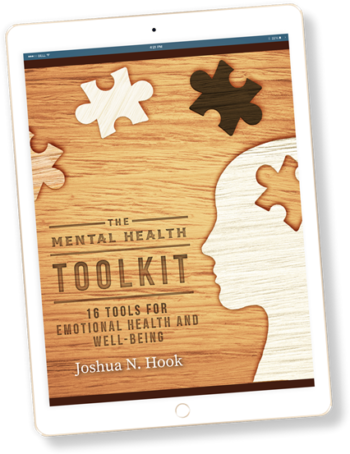3 Strategies to Change a Behavior
August 27, 2015
Categories: Behavior
This post is Part 3 in a 4-part blog series on changing our thoughts, feelings, and behaviors. (If you missed the previous posts, you can find Part 1 here.)
Changing Behaviors Can Feel Weird
Changing behaviors or doing something different can feel unnatural. For example, if you are feeling sad or depressed, it probably feels natural to stay in your bed all day. It probably feels unnatural to do something different—like calling a friend and making plans. Similarly, if you feel anxious about something, it probably feels natural to avoid it. It probably feels unnatural to do something different—like actually facing the thing you are afraid of.
However, because thoughts, feelings, and behaviors are all connected, sometimes if we do something different (even if it feels unnatural), this can lead to changes in our thoughts and feelings. It’s kind of like the old saying “fake it ‘till you make it” except it really works.
How to Know What Behavior to Change
How do we know what behavior to change? Here are two tips:
- Do the opposite. Sometimes it can be helpful to think about doing the opposite of our natural tendency. For example, if we are feeling down, our natural tendency might be to watch television or surf the Internet all day. The opposite behavior might be to go to the gym, or meet up with friends at happy hour.
- Start with the feeling you want, and then target a behavior associated with that feeling. Here we start by identifying a feeling we would like to experience. Then we work backward and think about what a person who feels that way might be doing. For example, perhaps we want to feel tender or close to someone. To feel that way, someone is probably connecting with another person on a deeper level. So we might call a family member or friend and ask them how they are doing.
3 Strategies to Change a Behavior
After you have identified the behavior you want to do, here are 3 strategies for making the change. The strategies are easy to remember, because they all start with the letter “S”
- Start small. One of the most common mistakes people make when trying to change a behavior is to start doing something too big. For example, maybe you want to get back into shape, so you resolve to run 5 miles. That’s too much too soon! You are setting yourself up for failure. Instead, start small. Resolve to run for 5 minutes. Then build on your success. Always start with something you know you can do.
- Schedule it in. When trying to change a behavior, write it down in your schedule. Pick a time during the day to do the behavior. It’s best if you can do it at the same time every day. Your new behavior won’t feel natural at first—that’s okay. Schedule it in like you would an appointment on your calendar. Over time, the new behavior will become second nature. But at first, you have to schedule it in or it won’t happen.
- Support. You can’t change a behavior alone. You need accountability and support. Ask a friend to call you every day to check in with you about your behavior change. Better yet, partner together with a friend and make the change as a team. Go public with your behavior change on social media. Gather a community around you to help you and encourage you.
Discussion: What have you found to be most effective when changing a behavior?
Related Thoughts
8 Comments
Leave A Comment

Subscribe To My Newsletter
Join my mailing list to receive the latest blog posts.
Receive my e-book “The Mental Health Toolkit” for free when you subscribe.



[…] your best to change what you can. This is the active part of trying to address or change disappointments in our own life. I think […]
[…] thing that has helped me is to schedule it in. It might not be the most spontaneous thing in the world, but what if you tried to do one thing […]
[…] landscape. ACT is a type of behavioral therapy, so a big part of the approach involves trying to change behaviors that are causing problems in your life. (ACT talks about this process as committed action in line […]
[…] Click here to read Part 3: Changing Behaviors […]
[…] cognitive-behavioral therapy (CBT). It’s based on the idea that our thoughts, feelings, and behaviors are all connected and influence one another. For example, if we are feeling sad or depressed, we […]
[…] different. You can reflect on your thoughts and feelings all day long, but until you actually change something in your actual behavior, you are likely to stay stuck. But change can be REALLY difficult. Even something simple like […]
[…] you have power. You could do something different. For example, you could make different choices, do different behaviors, or change your ways of […]
[…] we are relentless about asking these questions, we will realize that changing a behavior is not that easy. It’s not easy to break a bad habit. It’s not easy to lose weight. It’s not […]